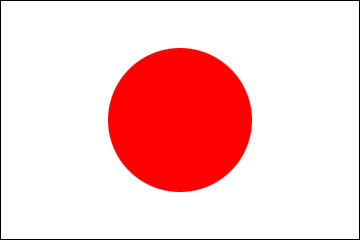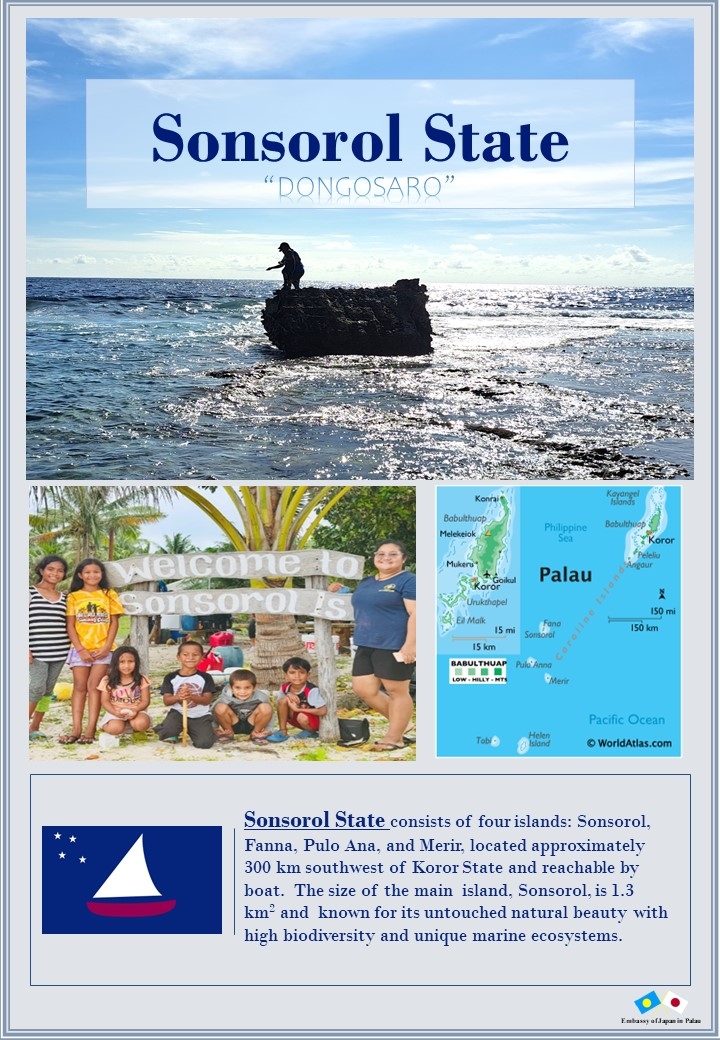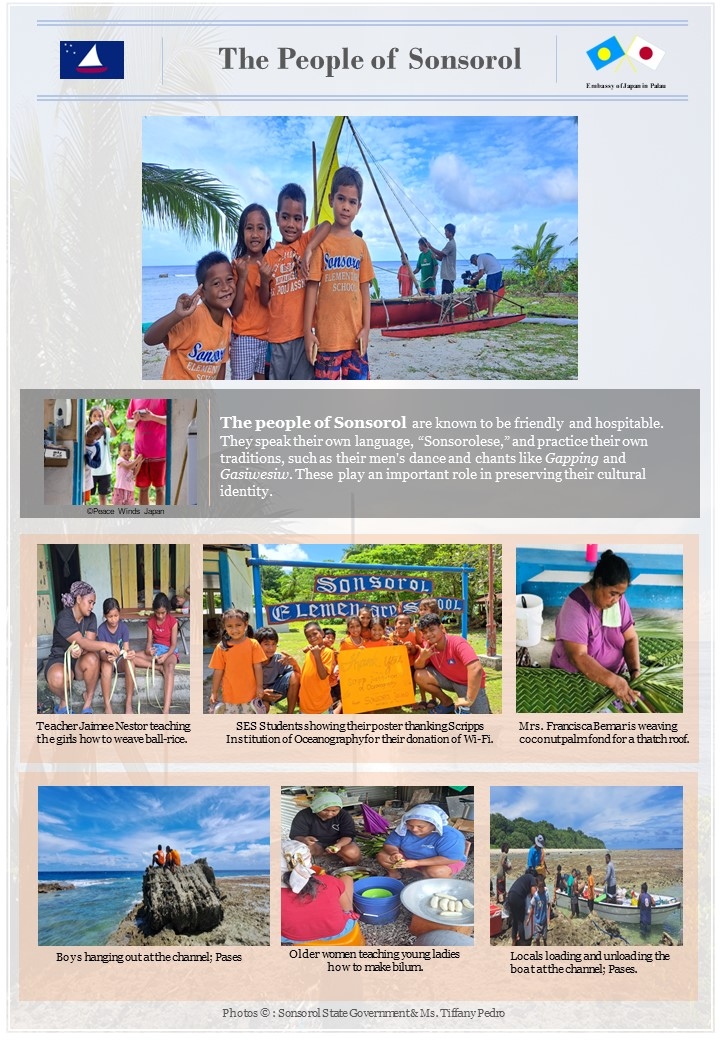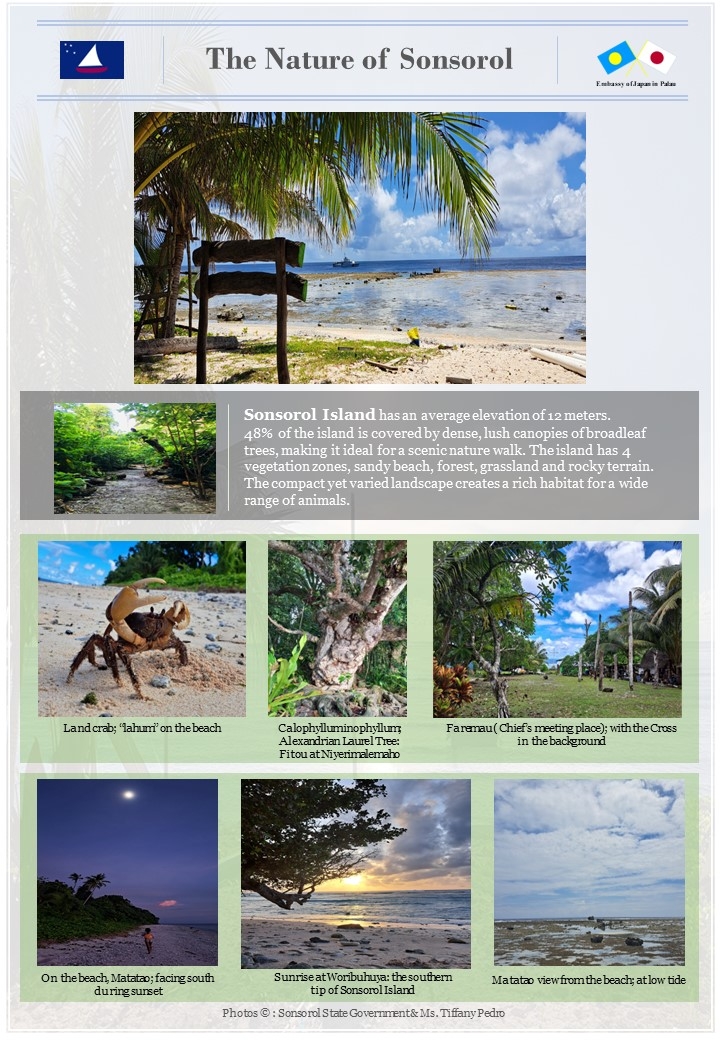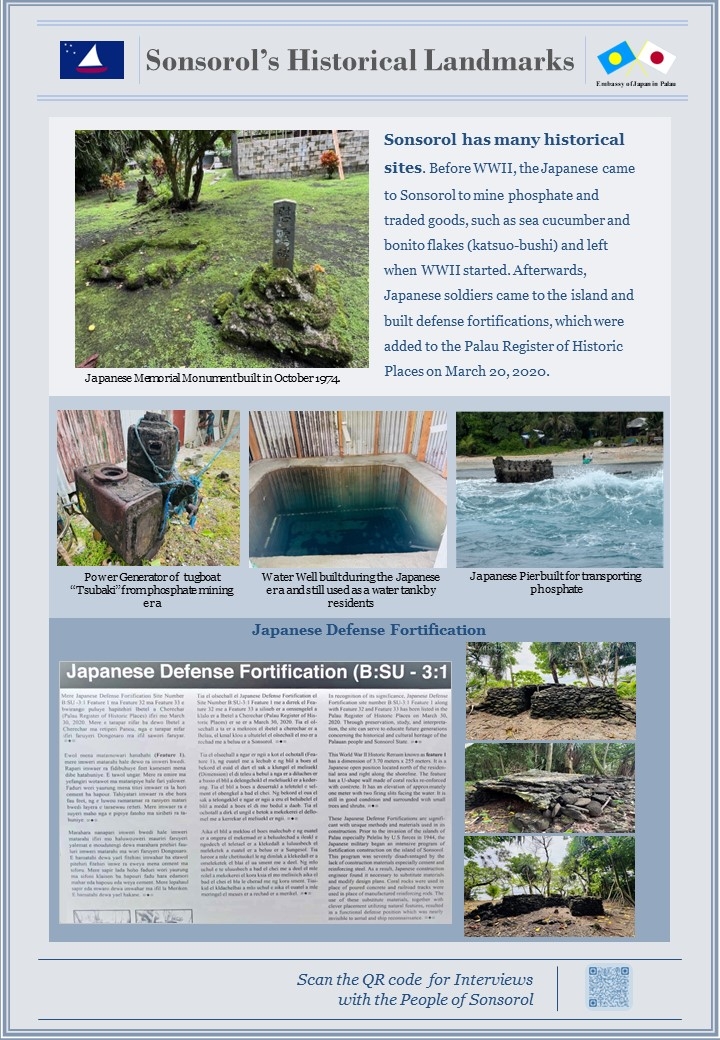16 States of Palau: Sonsorol
2025/4/4
An Introduction to Sonsorol State
The Embassy of Japan is starting a new series that will introduce the 16 states of Palau, beginning with Sonsorol State, in an effort to highlight the different cultures and histories of each region.
As part of this series, we will explore each state's connection to Japan by interviewing residents and visiting historical Japanese sites. This project aims to strengthen cultural ties and promote mutual understanding between Japan and Palau. The information is available both in English and Japanese.
As part of this series, we will explore each state's connection to Japan by interviewing residents and visiting historical Japanese sites. This project aims to strengthen cultural ties and promote mutual understanding between Japan and Palau. The information is available both in English and Japanese.
More Historical Landmarks of Sonsorol State
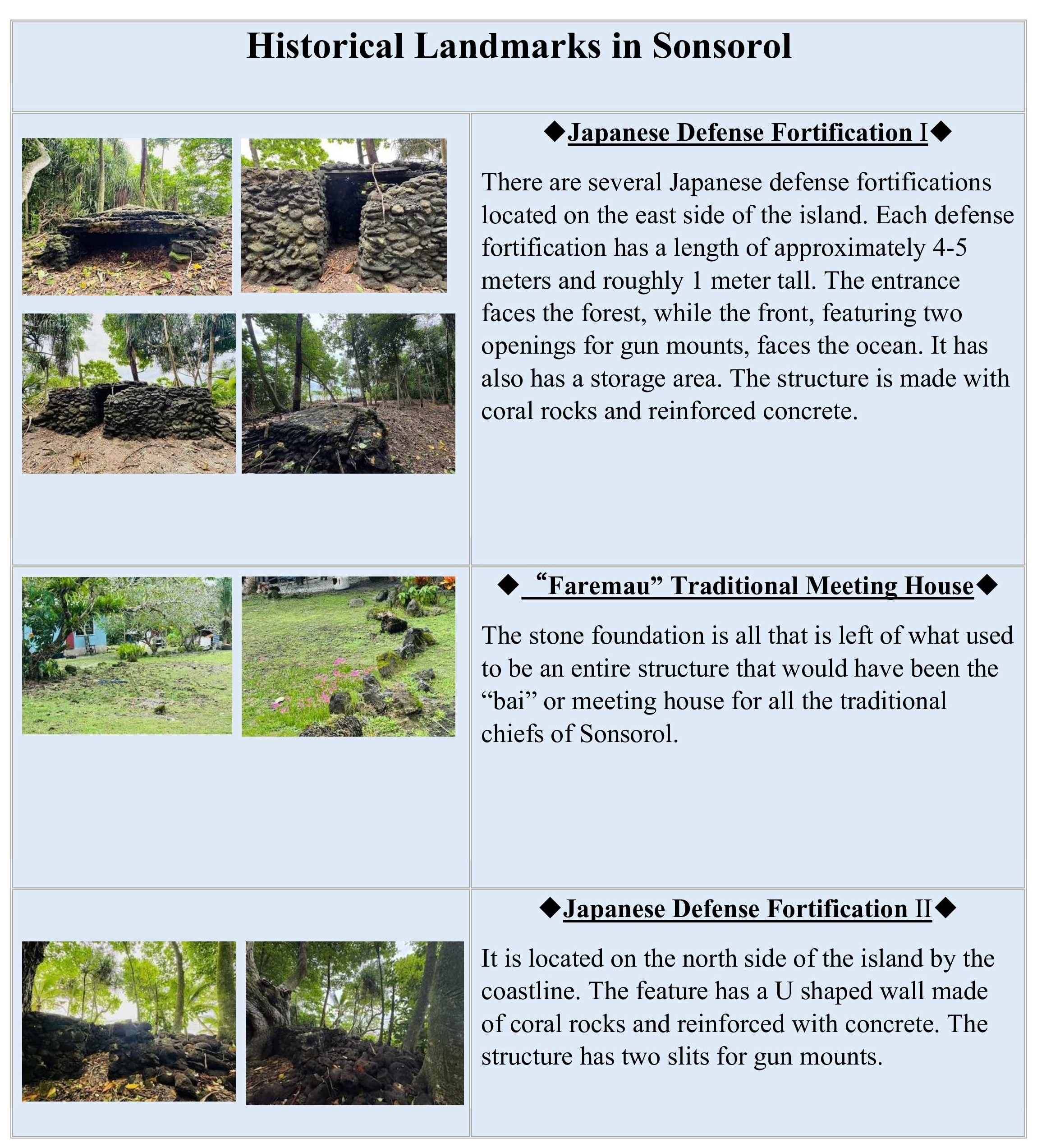
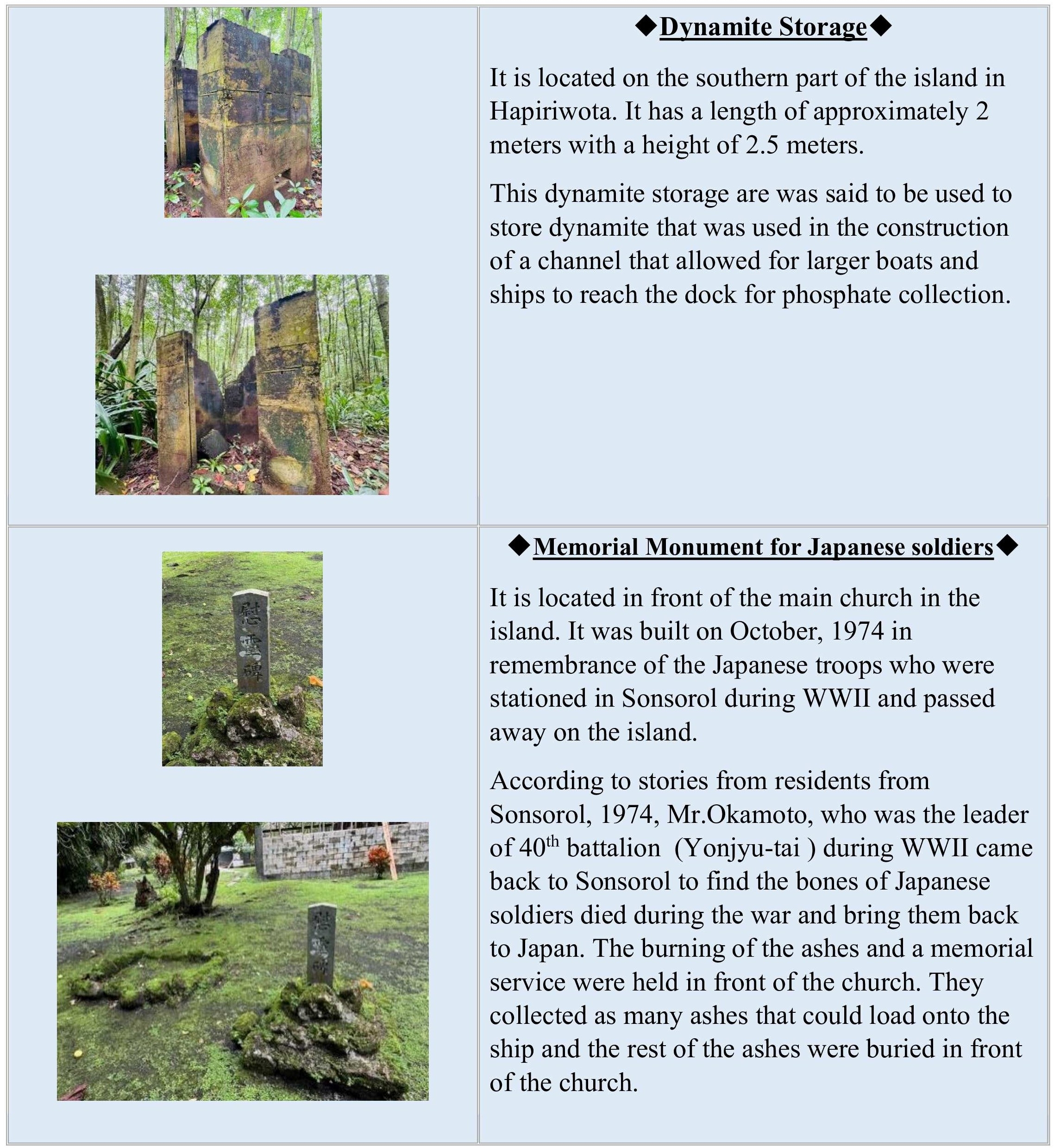
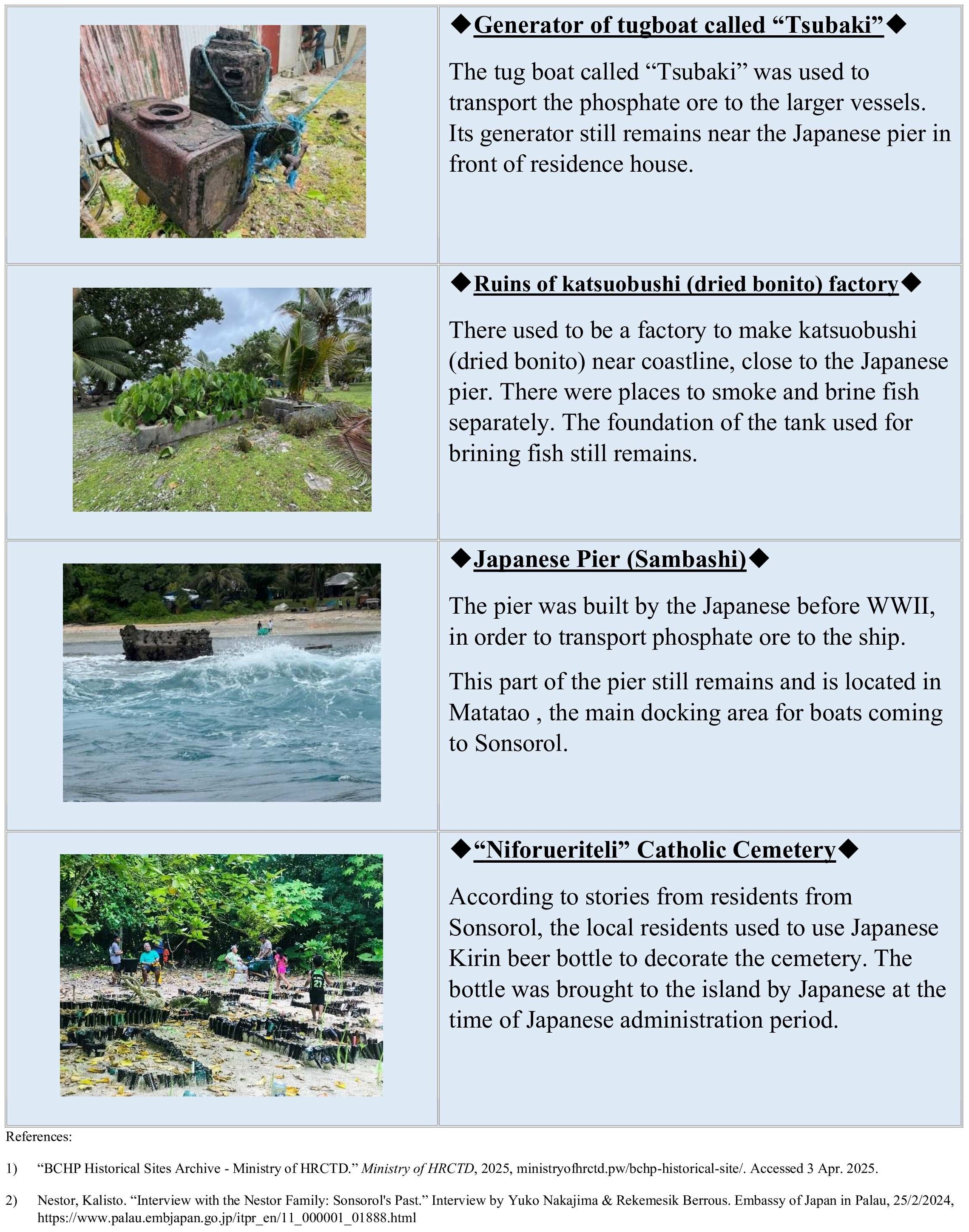
Interview with the Nestor Family: Sonsorol's Past
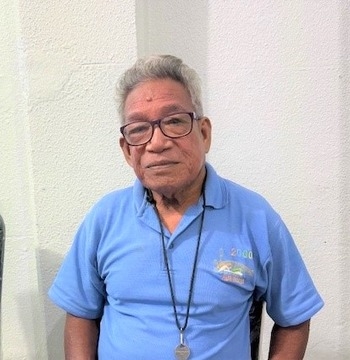
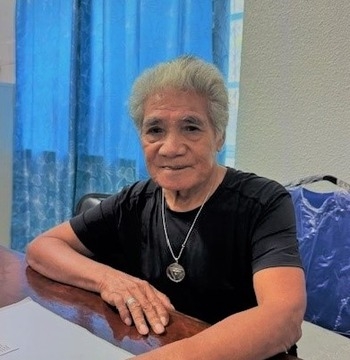
On February 2, 2025, we interviewed Mr. Kalisto Nestor (left) and his brother Mr. Patrick Nestor (right). The Nestors shared their insight into the history of Sonsorol during World War II as told to them from their father and older family members.
The Nestors began by pointing out a key historical site located on Kalisto’s land: a dynamite storage building. The structure, far from the village center, was used to store the dynamite that were used in the construction of a channel that allowed larger boats and ships to reach the dock for phosphate collection. Nearby, the remnants of a “Katsuo-bushi” company (fishing company focused on fermenting and smoking skipjack tuna to make bonito flakes) led by a man the Nestors know of only as Sato-san, remains, as do two piles of phosphate, offering a small look into the island's past during the Japanese era.
Another piece of Sonsorol’s history is the story of a Kamani Tree, or “Btaches” in Palauan. The enormous tree, which once served as a lookout post for Japanese soldiers during the war, unfotunately fell in 2011, and no remnants of it remain today. The Nestors recalled how Sonsorol, once home to around 700 soldiers during wartime, had a vastly different population during that period. The rest of the 300 soldiers were stationed on Merir Island. Only about 200-300 Sonsorolese remained on the main island, with many relocated to nearby Fanna. The villagers in Fanna supplied the soldiers with food every few weeks.
Before the war, the Nestors recalled several Japanese companies operating in Sonsorol, including the Katsuo-bushi business, phosphate mining, and even a sea cucumber business. One of the more integral companies, the “Nantak” phosphate company, employed many locals, although the exact number has been forgotten by the Nestors. The Japanese military presence was also substantial, with four battalions stationed on the island: Yonjutai, Kikango, Santo, and Juichitai, each with specific duties. In total, around 1,000 Japanese soldiers were stationed on Sonsorol and Merir Island, but less than 300 survived by the end of the war. In 1974, Mr. Okamoto, the leader of the Yonjutai battalion, returned to Sonsorol and enlisted local help, including Salvador Kintoki and others, to locate the soldiers’ mass graves.
One prominent moment of Sonsorol’s post-war history occurred in 1975. When those from Tokai University were tasked with collecting the remains of the fallen Japanese soldiers for cremation. The island’s High Chief, following a local tradition of respect for the deceased, insisted that the remaining ashes be buried near the church rather than cast into the sea. This thoughtful gesture marked a significant moment of respect for those who had died during the war.
Through their memories, Mr. Patrick and Mr. Kalisto Nestor provided a unique and personal perspective on the island’s history, shedding light on local culture, industry, and wartime events that have made Sonsorol Island what it is today.
